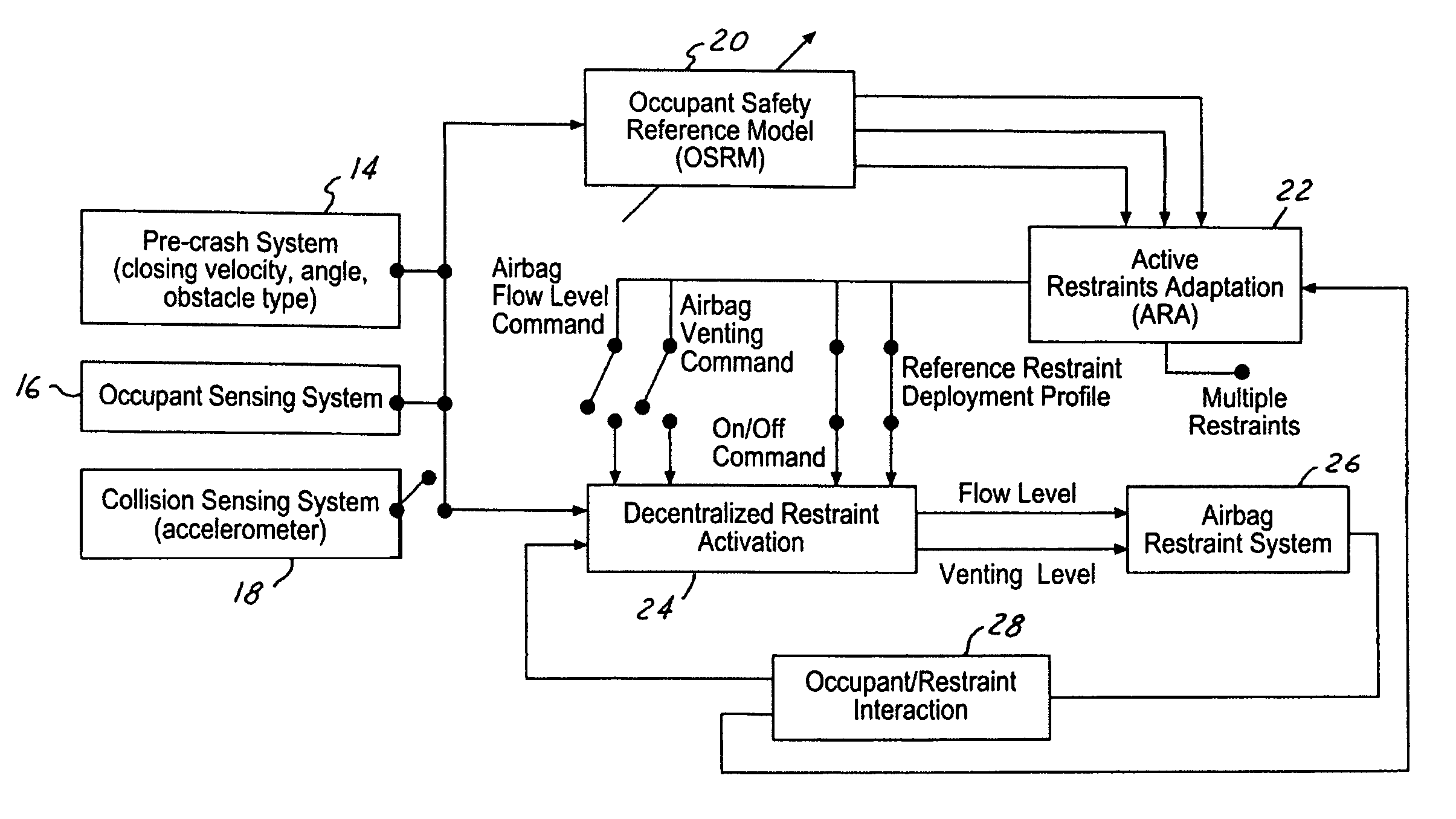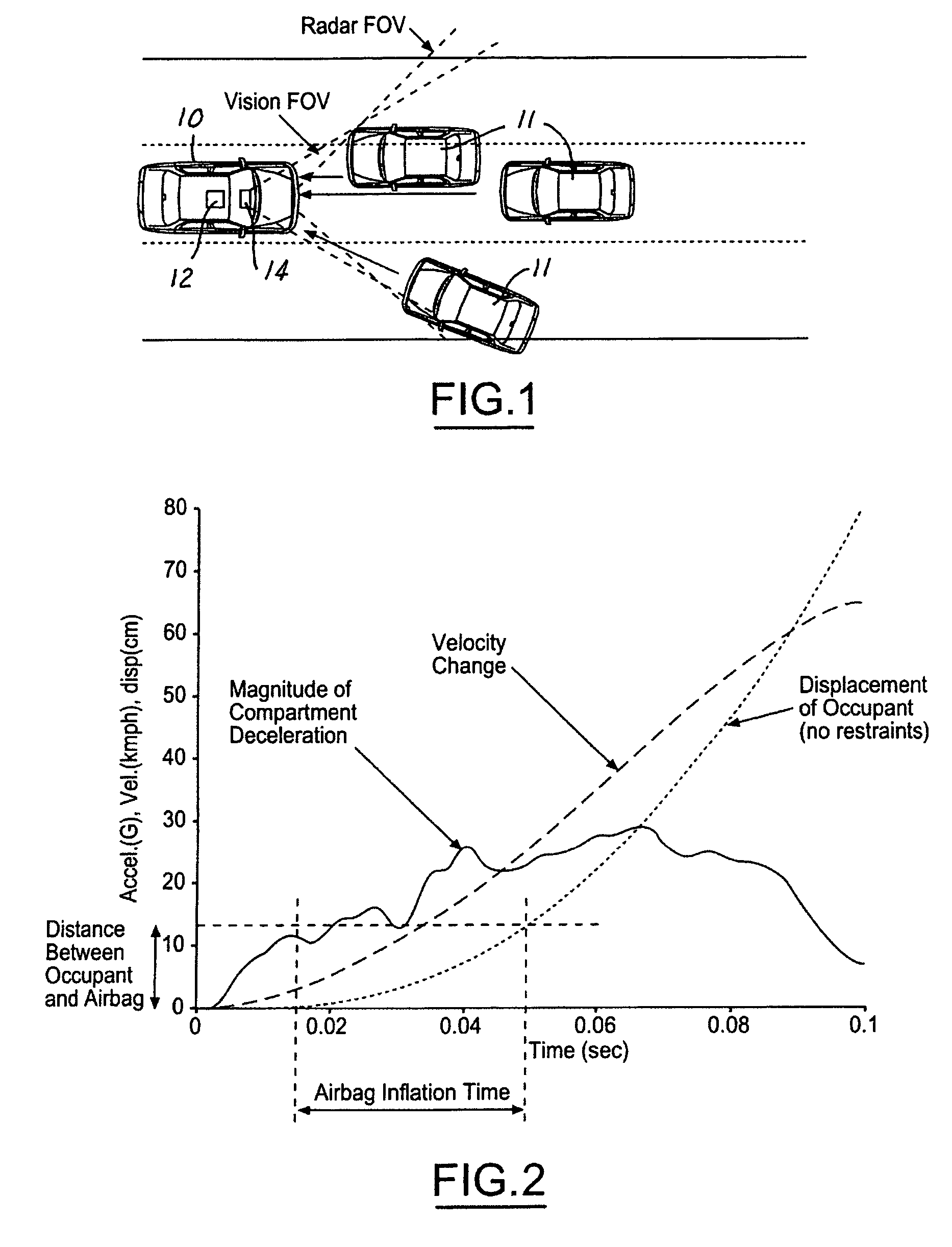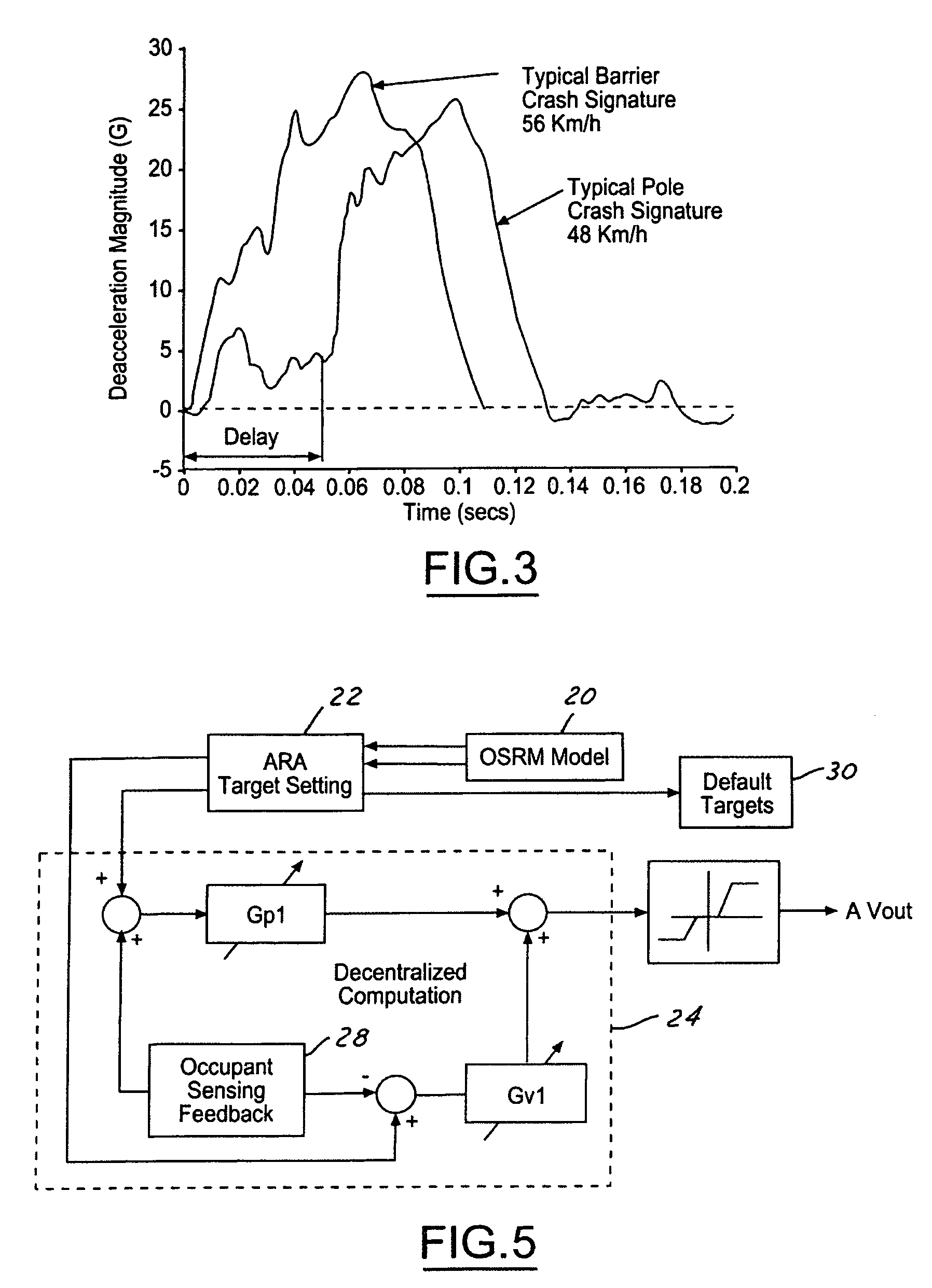Active adaptation of vehicle restraints for enhanced performance robustness
a technology of performance robustness and active adaptation, which is applied in the field of vehicle crash safety systems to achieve the effect of reducing the kinetic energy of the occupants, avoiding injuries or effectively reducing injuries
- Summary
- Abstract
- Description
- Claims
- Application Information
AI Technical Summary
Benefits of technology
Problems solved by technology
Method used
Image
Examples
Embodiment Construction
[0019]In the following figures, the same reference numerals will be used to refer to the same components. In the following description, various operating parameters and components are described for one constructed embodiment. These specific parameters and components are included as examples and are not meant to be limiting.
[0020]Referring now to FIG. 1, there is shown a schematic diagram of a vehicle 10 including an actively adaptable vehicle restraint system 12 in accordance with the present invention in various collision scenarios with potential target vehicles 11. The actively adaptable vehicle restraint system 12 operates in coordination with the vehicle pre-crash sensing system 14. The pre-crash sensing system 14 generates object signal information in the presence of an object within its field-of-view. The pre-crash sensing system 14 may be comprised of one or more of a number of types of sensors including radar, lidar and vision systems. Vision systems may be comprised of one ...
PUM
 Login to View More
Login to View More Abstract
Description
Claims
Application Information
 Login to View More
Login to View More - R&D
- Intellectual Property
- Life Sciences
- Materials
- Tech Scout
- Unparalleled Data Quality
- Higher Quality Content
- 60% Fewer Hallucinations
Browse by: Latest US Patents, China's latest patents, Technical Efficacy Thesaurus, Application Domain, Technology Topic, Popular Technical Reports.
© 2025 PatSnap. All rights reserved.Legal|Privacy policy|Modern Slavery Act Transparency Statement|Sitemap|About US| Contact US: help@patsnap.com



